About Jaipur Tour Information
- Location: 336-km From Jodhpur, Rajasthan
- Built In: 1727 AD
- Significance: Capital City of Rajasthan State
- Best Season: October To March
- Local Transport: Tourist taxis and RTDC buses are available.
Jaipur is enveloped by rugged hills and enclosed within a wall that has seven gates. Within these walls are some of the finest examples of Rajasthani and Mughal architecture. The Old City is also known as the "Pink City" as the entire city was painted pink on the orders of Maharaja Man Singh II when the Prince of Wales visited Jaipur in 1876, as pink is the color of festivity in Jaipur.
Jaipur was founded by Maharaja Jai Singh II in the 18th century. The city was carefully planned and built according to the ancient Hindu treatise on architecture. Apart from being a diplomatic warrior, Jai Singh had interests in astronomy. The amazing observatory, Jantar Mantar, was built by him.
JAIPUR - THE PINCK CITY TOURS
The Rose Pink City founded by Maharaja Jai Singh II (1693-1743), is the capital of Rajasthan. It is a major attraction for the first-time visitor. Jaipur is surrounded on all sides by rugged hills, crowned with forts & enclosed by embattled walls. Houses with latticed windows line the streets with their rose pink colour, lending enchantment to the scene, which is almost magical at sunset.
The Old City (Known as the Pink City) is a great place to wander around. The whole city was painted in Pink colour by Maharaja Man Singh II when Prince of Wales, later Edward VII, visited Jaipur in 1876 AD. Today, every home within the city is obliged by law to maintain its facade. It is a very well planned city laid out in a grid pattern and was designed by a young Bengali engineer and scholar by the name "Vidyadhar Bhattacharya".
Jaipur was and remains the only city in the world, symbolising the nine divisions of the universe, through nine rectangular sectors sub-dividing it. Jaipur is a royal city & this is its most noticeable aspect, small buildings & festivals testify it.
Jaipur & its surroundings are rather like an endless museum. The city also offers an endless variety of crafts. Jewellers here still fashion the beautiful enamel-on-gold pendants, studded on the reverse with precious stones or pearls & turquoise that one sees in miniature paintings. Jaipur's lacquer bangles are famous all over the world. This is a city to be visited.
Sightseeing in Jaipur
Amer Palace

The magnificent fort with its huge ramparts & watchtowers, overlooking the Delhi-Jaipur Highway. It is believed to have been the capital of the "Minas", the original inhabitants of Rajasthan.
City Palace
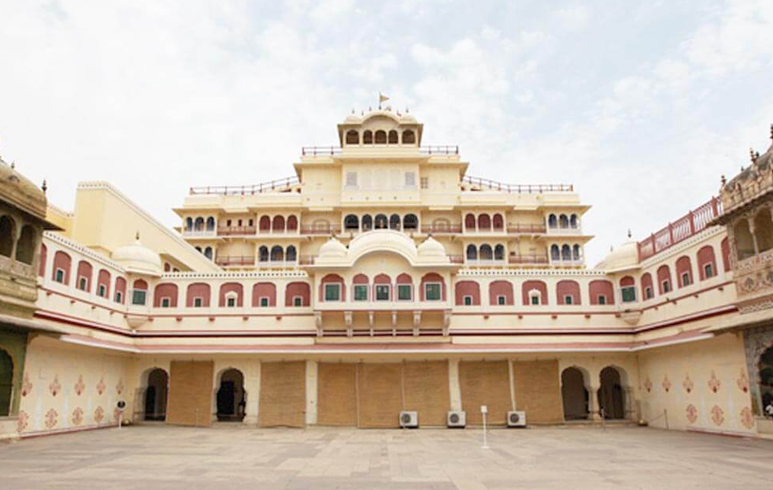
Nakkarkhana-ka-Darwaza, the imposing gateway of the City Palace guarded by stone elephants, is monumental.
Hawa Mahal
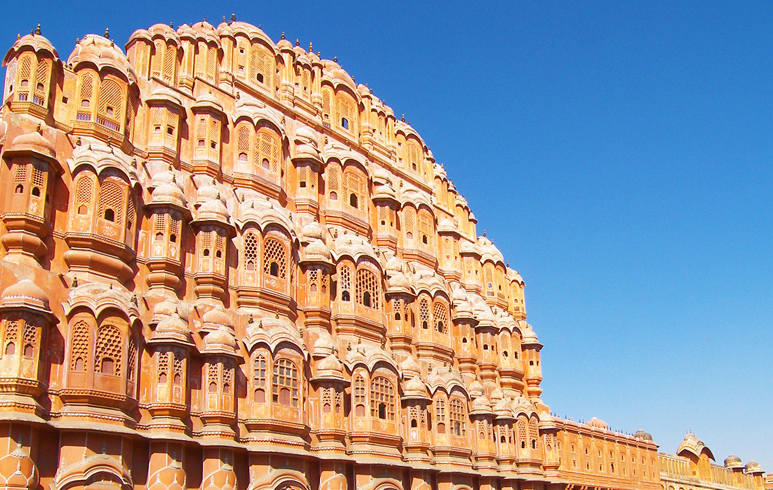
A Pandora's box of wonders, the enchanting Hawa Mahal is a multi-layered palace, with a profusion of windows and stone screens.
Jai Garh
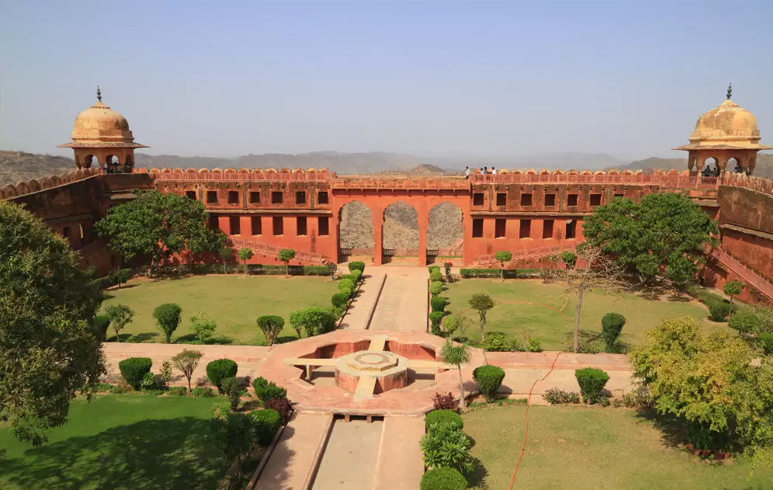
Built on a peak, Jai Garh overlooks the palace & city of Amber below. Jal Mahal is Jaipur's lake palace. It is surrounded with water.
Nahargarh Fort
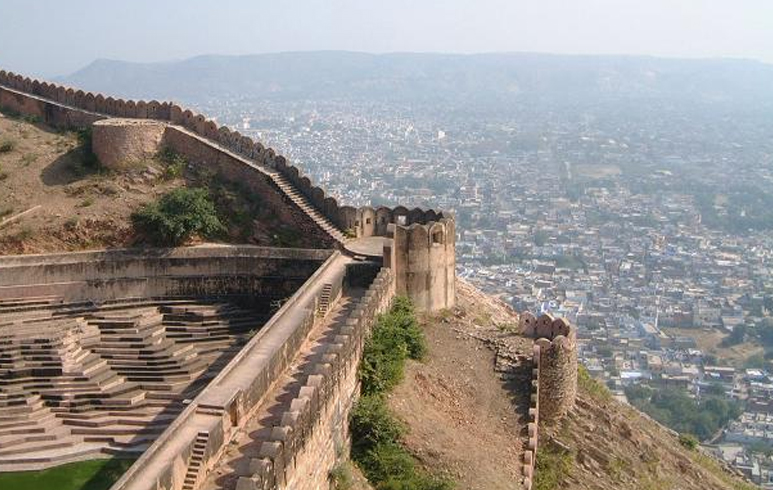
Originally called Sudarshan Garh, it affords a splendid view of Jaipur.
MONUMENTS
Jantar Mantar
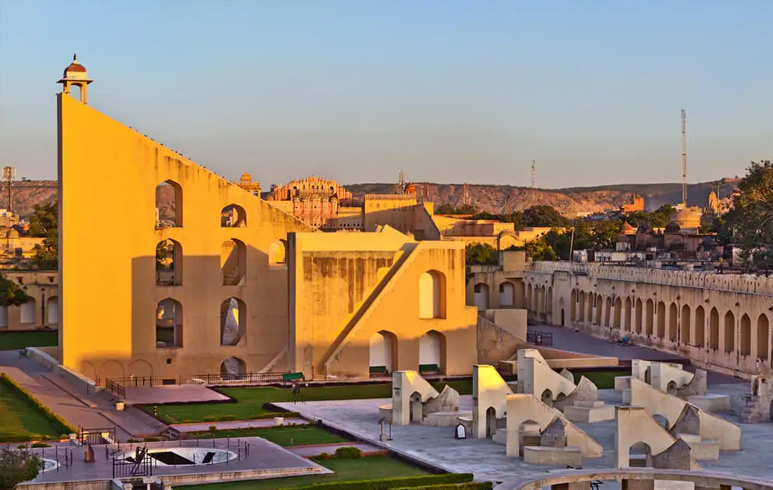
The amazing astronomical three-storey-high observatory, of an 18th century Rajasthani king, named Jai Singh.
EXCURSIONS
TEMPLES
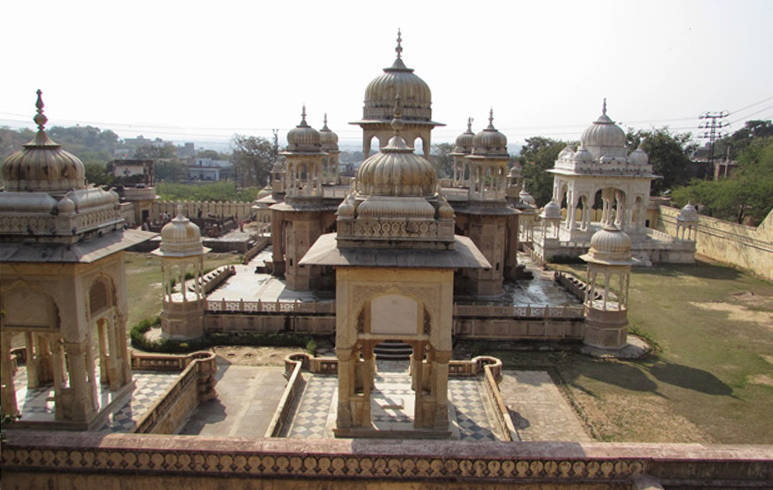
Bairath (86-km on the Shahpura-Alwar Road): An important historical place with the excavated remains of a circular Buddhist temple - unique in Rajasthan and the earliest known temple in India. Bairath also has relics of the Mauryan, Mughal and Rajput periods. A mint constructed by Akbar, a beautiful Mughal garden and a remarkable monument with painted 'chhatris' and wall built by Jahangir, are other attractions.
Galta (2.5-km)

Beyond the gardens amidst the low hill guarding the city lies the old pilgrim centre of Galtaji. Temples, pavilions and holy 'kunds' (natural springs and reservoirs) dot the serene green landscape. The small temple of the Sun god, built by Diwan Kriparam on top of the highest peak, is visible form all parts of the city.
LAKES
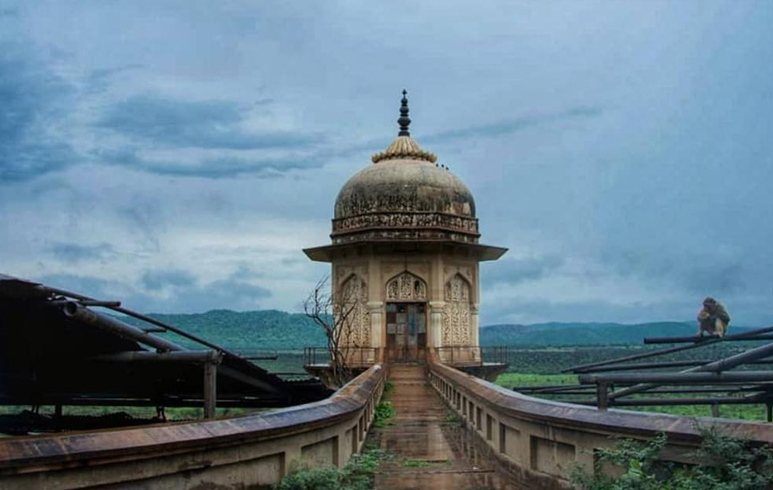
Ramgarh Lake (32-km north-east): A huge artificial lake created by constructing a high dam amidst tree covered hills. While the temple of Jamwa Mata and the ruins of the old fort are some of its antiquities, its beautiful landscape makes it an idyllic picnic spot.
PALACE

Samode (40-km north-west): The beautiful Samode Palace, has been rebuilt and renovated and provides a fine example of the Rajput haveli architecture. It is an ideal spot for outings.
GARDENS

Vidyadhar's Garden: Nestled in a narrow valley, this beautiful garden was built in honour of Jai Singh's chief architect and town planner.
MUSEUMS
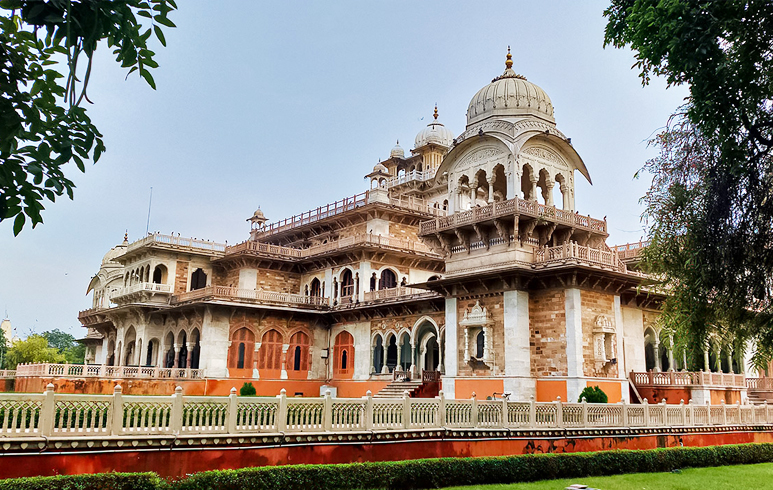
Government Central Museum: This is the oldest museum in the state. The buiding, designed by Colonel Sir Swinton Jacob is located in the centre of the sprawling Ram Niwas Bagh, built in 1876 AD. When King Edward VII visited India as the Prince of Wales, it was opened to public in 1886.
HOW TO GET THERE
Air: Jaipur has its own airport, and is well connected to all other tourist and business centres.
Rail: An excellent connection to Delhi by Shatabdi Express and the Pink City Express. Other connections to Jaipur are from Bikaner, Jodhpur, Udaipur, Ahemadabad, Secunderabad and Lucknow.
Road: A network of reasonably comfortable tourist buses, run by road corporations of Rajasthan, Haryana and others.